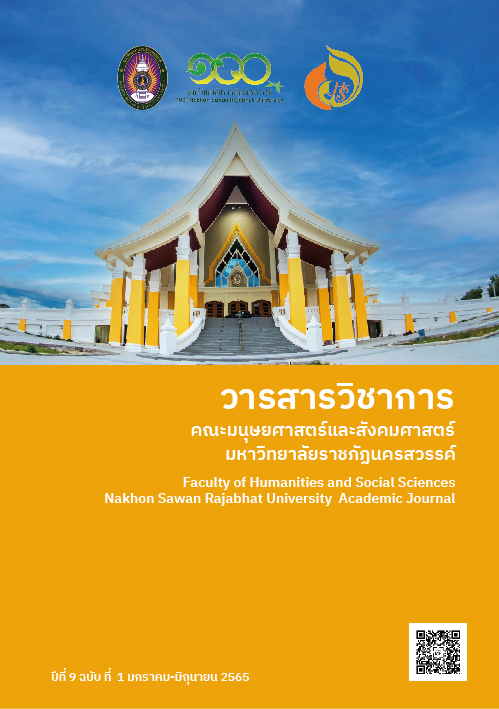Techniques Singing of Shanxi Folk Songs: Fen He Liu Shui Hua La La and Tao Hua Hong Xing Hua Ba
Main Article Content
Abstract
The purpose of this research was to analyze the vocal techniques in Shanxi folk songs of 2 songs: 1) Fen He Liu Shui Hua La La (汾河流水哗啦啦), 2) Tao Hua Hong Xing Hua Ba (桃花红杏花白) by using a qualitative research methodology by using the method of collecting data according to the principles of musicology. from document studies and field work. and analyze music content according to western music theory and collect information from documents.
The results were analyzed through the analysis of Shanxi provincial folk songs in terms of form, melody, rhythm, key signature, and tone color. To use as a reference for promoting the singing of folk songs and modifying the singing technique in accordance with the Shanxi folk culture. Which has been analyzed and synthesized that there are 3 important techniques of singing folk songs: Jia sheng jiqiao technique was high vocalization technique, Hua she jiqiao technique change the color of the sound to make it blurry, the goose technique Han sheng jiqiao was creating sound intensity.
Keywords: Shanxi, Folk song, Falsetto, Flutter tongue, Shouting.
Article Details

This work is licensed under a Creative Commons Attribution-NonCommercial-NoDerivatives 4.0 International License.
References
Chen, Tsung-Ning. (2013). A study and Application of Countertenor-An Example of Oberon from Britten's Opera“A Midsummer Night’s Dream”. Taiwan: National Taiwan Normal University.
Hinkley, P. Sandy. (2017). Effects of Vibrato and Pitch-Varied Vocal Models on High School and Undergraduate Singers' Intonation, Intensity, and Use of Vibrato. The Florida State University.
Lee, Chung Lin. (2005). Exert "Male falsetto singing" Research - From countertenor mentions. Taiwan: Chinese Culture University.
Mark, L. L. (2010). Ritual and Music of North China: Shawm Bands in Shanxi. China Review International, 17(2), 246-251.
Peterson, Elizabeth Anne. (2012). Toward validation of an acoustic index of dysphonia severity. The University of Utah.
Smith, J. T. (1984). Instrumental Solo and Ensemble Music For flute: by François Devienne. Notes, 40(3), 647.
Smith, N. T. (2022). Kevin Volans-Kevin Volans, Lenguas de Fuego. Louth Contemporary Music Society, LCMS20215. Tempo, 76(299), 98-99.
Xiao, Y., & Ni, M. (2019). The Shanxi Grand Theater: The “Renaissance” of Chinese Drama Land. In Grand Theater Urbanism (pp. 149-178). Springer, Singapore.
Yang, X., & Hu, X. (2020). The Social and Cultural Characteristics of Shanxi Ancient Drama Costumes. Asian Social Science, 16(3).


